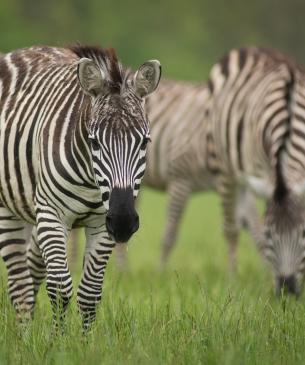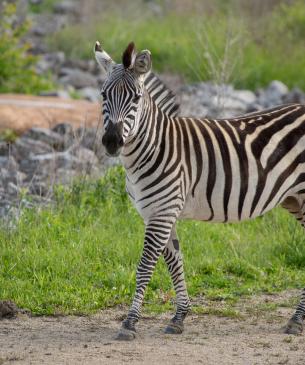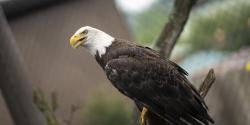The Grant's zebra is the smallest of six subspecies of the plains zebra.
It spends more than 50% of its day grazing on grass. Zebras migrate over 1000 miles yearly, constantly searching for food and water.
Scientific Name: Equus quagga boehmi
Conservation Status: Near Threatened
Size: Height at the shoulder of about 4 ft., with a body length of 6 to 7 ft.
Weight: Females weigh 175 to 250 lbs., males 220 to 320 lbs.
Median Life Expectancy: 16.9 years











